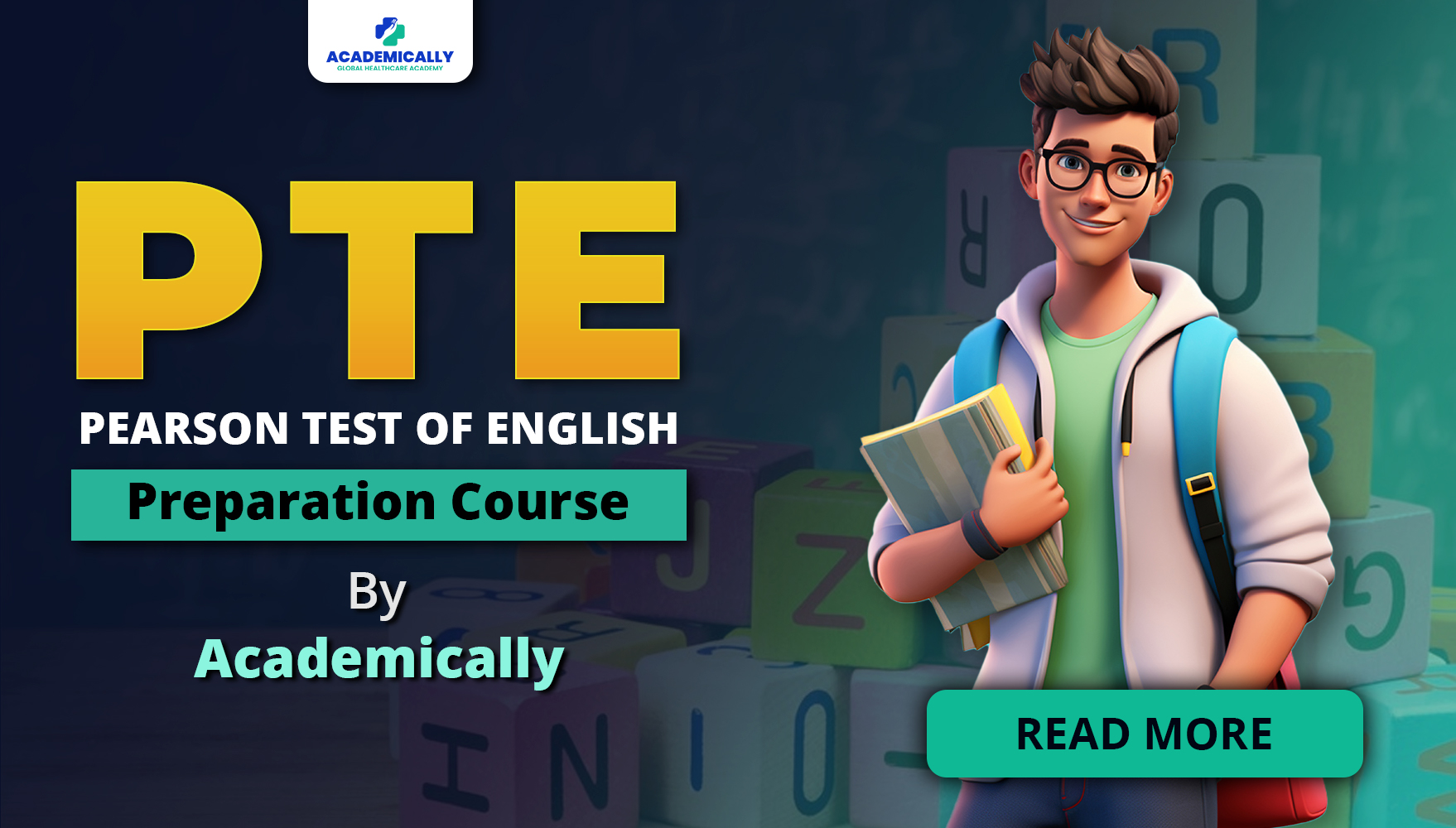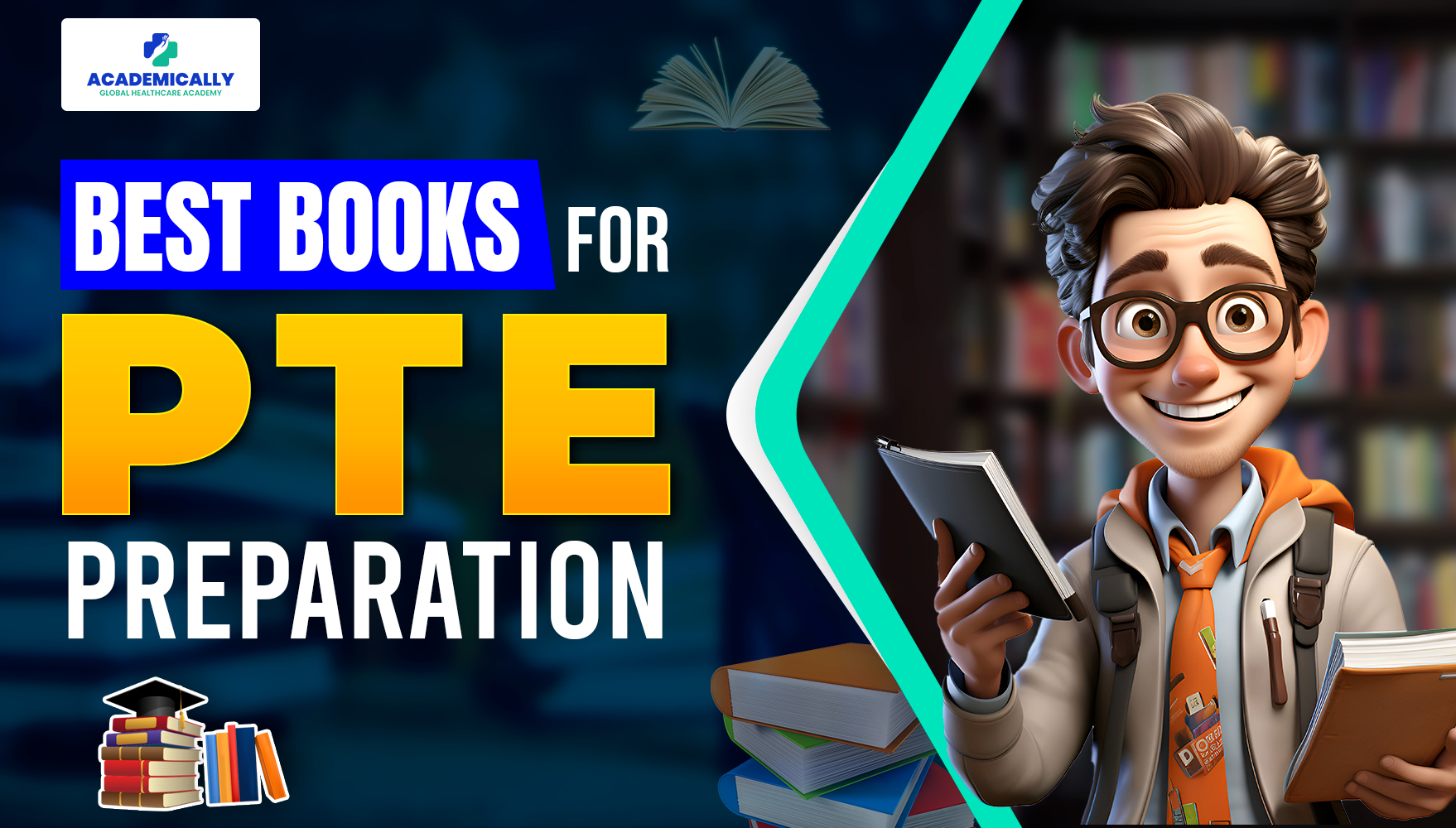Introduction
If you're a non-native English speaker looking to study, work, or immigrate to an English-speaking country, the Pearson Test of English (PTE) is one of the most popular language proficiency exams available.
This comprehensive computer-based test assesses your English language skills across four key sections: Speaking, Writing, Reading, and Listening.
Understanding the PTE exam's structure and sections is crucial for effective preparation and achieving your desired score.
In this blog, we will delve into each section, explore question types, discuss the scoring system, and offer essential tips to excel in the PTE exam.

PTE Test Format
The PTE test is entirely computer-based, making it convenient for test-takers to interact with the test interface. Responses to speaking and writing tasks are recorded via a microphone and keyboard, respectively.
PTE Test Duration
The total test duration for the PTE exam is approximately 3 hours, and it is conducted in a single sitting. Each section is individually timed, and there are scheduled breaks between sections.
Test Sections
The PTE exam consists of four main sections, each evaluating specific language skills:
a. Speaking: This section assesses your ability to communicate effectively in spoken English. Tasks include reading aloud, repeating sentences, describing images, answering short questions, and giving an extended personal response.
b. Writing: In the Writing section, you will be tested on your written English skills. Tasks include summarizing written text and writing essays on given topics. It evaluates your ability to express ideas clearly and coherently in writing.
c. Reading: The Reading section measures your ability to comprehend written English. It includes various question types, such as multiple-choice, re-order paragraphs, and fill-in-the-blanks based on the given passages.
d. Listening: The Listening section evaluates your ability to understand spoken English in various scenarios. Tasks include listening to audio and answering questions based on the content, summarizing spoken text, and filling in the blanks.
Question Types in the PTE Exam
Speaking and Writing:
- Personal Introduction based on a prompt: Introduce yourself based on the information provided.
- Reading Text Aloud: Read a short text aloud, demonstrating pronunciation and fluency.
- Listening to & Repeating Sentences: Listen to a sentence and repeat it accurately.
- Describing Image: Describe an image or chart using descriptive language and organization.
- Listening to & Re-telling a Lecture in Your Own Words: Listen to a lecture and summarize it in your own words.
- Answering a Short Question: Respond to a simple question briefly and clearly.
- Summarizing a Written Text in One Sentence: Summarize a passage in a single sentence with key points.
- Essay Writing: Write an essay of 200-300 words based on a given prompt, expressing a clear argument or point of view.
Reading:
- Multiple-choice, choose multiple answers: Select all correct options that complete a statement or answer questions.
- Re-order Paragraphs: Rearrange jumbled paragraphs to create a coherent passage.
- Fill in the Blanks: Complete sentences with the appropriate missing words from a given list.
- Multiple-choice, choose single answer: Choose the correct option that answers a question or completes a statement.
Listening:
- Summarize Spoken Text: Listen to an audio recording and summarize it in writing within a specific word limit.
- Multiple-choice, choose multiple answers: Select all correct options based on the information in an audio clip.
- Fill in the Blanks: Complete sentences by filling in the missing words as heard in an audio clip.
- Highlight Correct Summary: Identify the most accurate summary of an audio recording.
- Multiple-choice, choose single answer: Choose the correct option that answers a question based on an audio clip.
- Select Missing Word: Choose the correct word that completes an incomplete audio sentence.
- Highlight Incorrect Words: Identify words in an audio clip that are different from what you hear.
- Write from Dictation: Listen to a sentence or passage and write it down accurately.
PTE Scoring
The scores are based on the performance in each of the four main sections: Speaking, Writing, Reading, and Listening.
The PTE exam uses a scoring scale ranging from 10 to 90. Each section is scored individually, and the overall score is calculated based on the performance across all sections.
85+ Proficient Communicator:
- Reads and comprehends written English effortlessly.
- Demonstrates a strong ability to understand spoken English.
- Can effectively summarize information from various sources, both auditory and written.
- Communicates clearly and confidently in diverse situations.
76-84 Advanced Proficiency:
- Reads and comprehends complex texts, including hidden meanings, with ease.
- Expresses oneself fluently without difficulty.
- Possesses excellent social, academic, and professional communication skills.
59-75 Competent User:
- Understands major ideas in challenging texts.
- Engages in conversations with ease and spontaneity.
Demonstrates proficiency in communicating with others.
51-58 Moderately Competent:
- Has a good command of the language but may need improvement in communication.
- Understands basic spoken language with ease.
- Capable of dealing with routine situations while speaking.
43-50 Functional Proficiency:
- Understands mainstream English used in everyday situations, work, and school.
- Can communicate in English effectively, especially in ordinary circumstances.
30-42 Limited Proficiency:
- Understands basic phrases and expressions on various topics.
- Communicates in English using simple terms and sentences.
10-29 Elementary Proficiency:
- Comprehends basic phrases and idioms used in daily life.
- Can introduce themselves and ask simple questions.
- Engages well with others in basic interactions.
PTE Score Validity
Upon completing the PTE exam, candidates can expect prompt results, typically within five days. A notification email will promptly inform them when their scores are available. Additionally, candidates can access their PTE account to check their results online.
Remarkably, PTE Academic scores remain valid for a span of two years from the test date. This two-year window allows candidates ample time to utilize their scores for various academic and immigration purposes.
Conclusion
Gaining a comprehensive understanding of the PTE exam's structure and sections is paramount for success in demonstrating English language proficiency.
Remember, effective time management and targeted preparation are the keys to success. Utilize official study materials, sample questions, and online resources to refine your abilities. As you embark on your PTE journey, stay confident in your language prowess and aim high for your desired score.
So, are you ready to take on the challenge? Embrace the knowledge gained about the PTE exams structure and sections, register for the test, and let your language proficiency shine. Remember, the journey towards success begins with understanding, preparation, and the willingness to embrace new horizons. Best of luck in your PTE endeavour!
Fill up this form for a free one on one counselling session.




